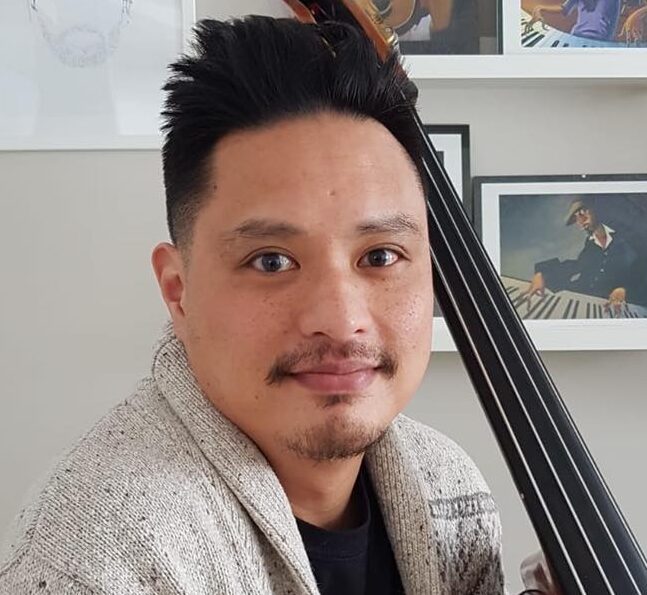Michael Mopas

Areas of Interest
Criminology; socio-legal studies; sound studies; science and technology studies; science, technology and law; crime, media and culture; cyber-crime and cyber-governance; policing and surveillance; governmentality; actor-network theory; food studies
Professor Mopas is currently accepting graduate students interested in the fields of: 1) criminology and socio-legal studies; 2) science and technology studies; 3) sound studies; 4) food studies; and 5) cultural studies.
About
Michael Mopas is Associate Professor in the Department of Sociology and Anthropology. He is cross-appointed to the Institute of Criminology and Criminal Justice and the Department of Law and Legal Studies. He is also a member of the Duncombe Studio for Social and Cultural Research.
Michael holds a PhD from the Centre of Criminology and Sociolegal Studies, University of Toronto. He specializes in the area of science, technology and law. His past research has looked at the regulation of the Internet and representations of forensics in popular culture. He has also published articles on public criminology and access to research.
Michael is currently completing a SSHRC-funded project that examines the place of sound in law. The study explores the ways in which judges hear and make sense of auditory evidence presented at trial and documents the work of audio forensic experts in making, interpreting and rendering them audible. As one of the few places where scientific facts and technological artefacts are opened up to scrutiny, the study uses the adversarial setting of the courtroom as a site to investigate the mutually constitutive relationship between science and technology, on the one hand, and law, on the other.
More recently, Michael has turned his love for music into a new research project that explores the relationship between technology and emotion by looking at the ways that electronic artists produce ‘feeling’ and ‘soul’ with what are often thought of as cold and unemotional instruments (e.g., laptops, turntables, effects pedals, etc.).
In his spare time, Michael plays upright bass in several jazz bands in the city and participates in long-distance triathlons. He has completed two Ironman races (Lake Placid and Mont-Tremblant) and several 70.3 events. In September 2019, Michael will be starting a BMus (Honours) degree (part-time) here at Carleton U.
Works in Progress
Michael S. Mopas and Kat Huybregts. ‘Training by numbers: Wearable fitness-tracking technology, the body, and the quantified self’. Chapter accepted for inclusion in V. Zawilski (ed.), Bodywork in Canada. Toronto: Canadian Scholars’ Press.
Michael S. Mopas. ‘Tuning In: Making a Case for an ‘Aural Criminology’’. Revise and resubmit at Theoretical Criminology.
Selected Publications
Michael S. Mopas (in press) ‘Howling Winds: Sound, Sense, and the Politics of Noise Regulation’ in Canadian Journal of Law and Society.
Michael S. Mopas and Amelia Curran (2016) ‘Translating the Sound of Music: Forensic Musicology and Visual Evidence in Music Copyright Infringement Cases’ in Canadian Journal of Law and Society, 31(1): 25-46.
Michael S. Mopas (2014) ‘Translating Critical Scholarship Out of the Academy: ANT, Deconstruction, and Public Criminology’ in Dominique Robert and Martin Dufresne (eds.), Actor-Network Theory, Crime Studies and Technologies. London: Ashgate Publishing, pp. 81-98.
Michael S. Mopas (2014) ‘The Politics of Counting Crime’ in Deborah Brock, Amanda Glasbeek and Carmela Murdocca (eds.), Criminalization, Representation and Regulation. Toronto: University of Toronto Press, pp. 75-101.
Michael S. Mopas and Dawn Moore (2012) ‘Talking Heads and Bleeding Hearts: Public Criminology, Emotions and Newsmaking’ in Critical Criminology, 20(2): pp. 183-196.
Michael S. Mopas and Sarah Turnbull (2011) ‘Negotiating a Way In: Access to Information and Socio-legal Research’ in Canadian Journal of Law and Society, 26(3): pp. 585-590.
Michael S. Mopas (2008) “Cross-Examining the Evidence: Does the CSI Effect Really Exist?” in Joshua Greenberg and Charlene Elliott (eds.), Communication in Question. Toronto: Thomson Nelson.
Michael S. Mopas (2007) “Examining the ‘CSI effect’ through an ANT lens” in Crime, Media, Culture, 3(1): pp. 110-117.